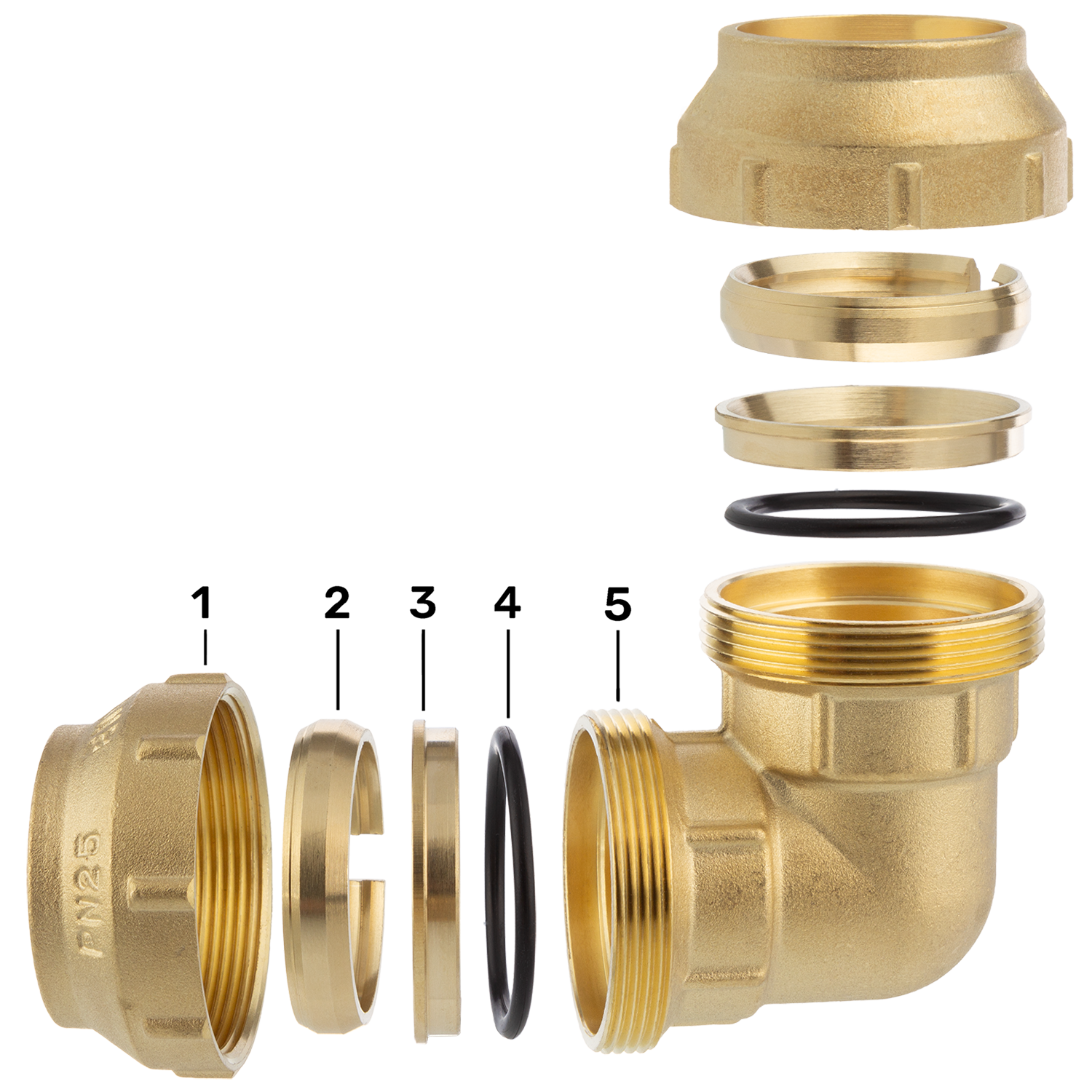All measurements in millimetres, weights in grams. For the photographic representation, we use an item size both studio light. The illustrations, technical data, dimensions and designs are non-binding. We reserve the right to make changes at any time without notice. The useful dimensions are defined or shown reinforced or result from the article designation. Other dimensions are for illustrative purposes only. Please note this in case of misuse.
Description
Brass compression fitting 90° elbow, suitable for drinking water
Connection:
2-way clamp
material:
Brass CW617N (suitable for drinking water pipes)
O-ring:
NBR 70 shore
Temperature:
-20°C to 90°C
Working pressure (PN):
max. operating pressure 25 bar (400 psi), 20°C 16 Mpa, 95°C 4.2 Mpa
Meets pressure conditions according to DIN 8076-1, thread according to ISO 228 (BS 2779) with parallel internal thread and conical external thread.
Meets pressure conditions according to DIN 8076-1, thread according to ISO 228 (BS 2779) with parallel internal thread and conical external thread.
Color:
Brass
Application:
Pipes made of PELD, PEHD, PE40, PE80, PE100
The facts
- Sandblasted look
- Can be used for cold and hot water
- suitable for all types of water, waste water and liquids of higher or lower density
- Brass CW61N (can be used for drinking water pipes)
The data
- ➀ Union nut: brass UNE 12165
- ➁ Clamping ring: Brass UNE 12165
- ➂ Sealing ring: Brass UNE 12165
- ➃ O-ring: NBR 70 shore
- ➄ Body: Brass UNE 12165

DOWNLOADRoHS confirmation HTC
DOWNLOADREACH addition brass HTC
DOWNLOADthe thread identification - or why 1" is not 25.4mm
Brass in the ground - dezincification
If brass or gunmetal is to be used in the ground for a longer period of time (over many years), you should check the prevailing conditions in advance.
There are some wells of drinking water suppliers where the installation of brass is not possible. The drinking water lacks zinc and the water would draw this out of the installed parts.
This is known as dezincification of the brass, which then leads to pitting or pipe breakage.
The longevity of a brass coupling also depends on the acidity of the soil. Soil with a high humus content or clay is more aggressive towards brass than pure sandy soil. Brass couplings can be protected from harmful substances in the soil, e.g. by coating them with grease.
Media
There are currently no media files available.

